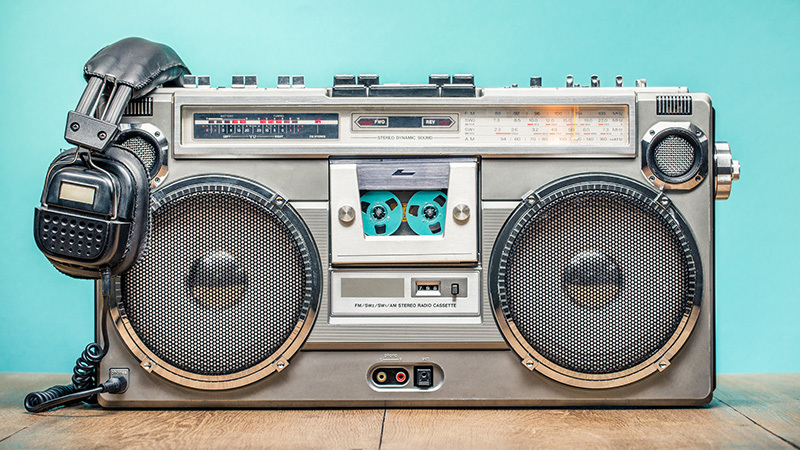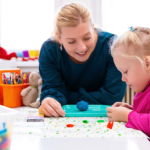As schools continue to cut down on formal music education, research is showing that they should be doing the opposite. Learning music can accelerate brain development; aid in listening and reading skills and language development; activate brain centers responsible for information processing, decision making, and focusing attention; and improve spatial reasoning.
Not every school has dozens of violins and trumpets on hand, and not every teacher has the training to create a classroom orchestra. However, no matter what subject you teach, you can bring music to your classroom, and no music is more fun and more engaging to your students than hip hop. In this article, we’ll look at the benefits of teaching hip-hop and how to integrate it in a variety of classes.
The Fundamentals of Hip-Hop
Hip-hop is one part music, one part culture. According to the Miami Urban Contemporary Experience, hip-hop breaks down into five elements:
- DJing: Kool DJ Herc blazed the trail of hip-hop in the 1970s by using percussion breaks and basslines from existing music to create new sounds and rhythms. Breaking down these sounds and beats can help develop students’ listening skills.
- MCing: Another term for rapping, MCing has been passed down to us from ancient African culture and oral tradition. It involves poetic elements, rapid-fire wordplay, and storytelling techniques. MCing requires hip-hop artists to be masters of language, so studying this element of hip-hop can enhance your students’ verbal skills.
- Breakdance: Breakdance has been called “poetry in motion.” It combines acrobatics with gymnastics and martial arts in a way that’s sure to build your students’ kinetic skills.
- Art: Hip-hop has also inspired visual art—specifically graffiti. You might not want to send your students roving the streets with spray cans, but there are plenty of other ways to use hip-hop to encourage your students’ visual skills.
- Knowledge of self: Many view hip-hop as a driver of social change and spiritual and political consciousness. This idea of understanding oneself and reaching out to the broader community taps into social-emotional skills.
Now let’s look at activities you can incorporate into your classroom to strengthen each of these five skills.
Listening Skills
Playing hip-hop music in class is sure to catch your students’ attention, so it’s a great opportunity to have students practice their close listening skills. Choose a handful of songs and have students listen for the following musical elements:
- Rhythm: Have students tap on their desks to the beat, meter, tempo, etc.
- Dynamics: Have students point out or describe moments when the noise level changes.
- Melody: Have students identify when a song is conjunctive (smooth, easy to sing) or disjunctive (sporadic, difficult to sing).
- Harmony: Have students identify examples of dissonance (harsh-sounding harmony, musical tension) and consonance (smooth sounds, often used to release musical tension).
- Tone color or timbre: Show students how two sounds can have the same pitch, but sound different. When an instrument and a voice produce the same note on the same range, it’s a matter of tone color.
- Texture: Have students point out when two melodies (or musical lines) happen all at once.
- Form: Have students pick out examples of strophic (vocal) music, through-composed music (music with no repeating sections), binary music (music that includes repeating sections), and ternary music (songs that return to the initial melodies after a contrasting section).
Having trouble thinking of family-friendly hip-hop to share with your students? Check out these lists from Spotify, Common Sense Media, and ParentMap.
Verbal Skills
As exciting as you might find literary analysis and 16th-century poetry, your students rarely feel the same way. However, when you use hip-hop lyrics as your primary text, that all changes. Students will be eager to hunt through the lyrics of their favorite songs to find and discuss issues such as word choice, metaphors, rhythm, rhyme, tone, word connotations, figurative meanings, personification, and more. You can provide lyrics for them to analyze or commission students to find lyrics that fit the definitions of these literary terms; just be careful to steer students toward “clean” artists and lyrics.
This article from Scholastic also recommends bringing in classic poetry and literature so that students can compare and contrast these works with hip-hop songs. This activity can help students discuss broader issues of theme, historical context, and synthesizing various viewpoints.
For younger students, you can also use hip-hop lyrics to help with pronunciation and learning letters. For example, you can have students create raps for each letter of the alphabet or practice pronouncing words and reading aloud with rhythm and purpose.
Kinesthetic Skills
Dancing might be a little difficult to implement in a standard classroom space, but if you’re a PE teacher (or if you have access to a gym or an open space), hip-hop can be a great way to get your students moving. Dance Academy USA says that hip-hop improves students’ flexibility, balance, and coordination, and also builds their self-confidence and artistic expression.
If some of your students are gifted in this area, you could try creating a class dance routine. Either in groups or as a whole class, you can have students call out different moves and coordinate them into a routine set to one of the students’ favorite hip-hop songs.
You can also choose from several existing routines. “The Cha Cha Slide” is one of the easiest to introduce to your students. The song calls out easy-to-follow directions, and students can add as much (or as little) flourish as they want.
Visual Skills
Setting aside issues of legality, graffiti is often a great example of word art. Graffiti artists use words, symbols, and colors to express deeper beliefs and emotions. Showing students examples of graffiti can introduce them to these ideas or give them practice in interpreting artistic elements with something besides classical works of art.
For more hands-on activities, check out these visual art projects from the National Association for the Education of Young Children:
- Students can draw their own names in creative ways on index cards, paper, or dry-erase boards.
- Students can create a mural about their neighborhood, family, or other topic you’ve been studying in class. They can create individual murals or each draw a piece of a mural that you hang on the wall.
- Students can ask questions about each other’s creations. For example, they might ask each other why they used certain colors, what certain images or symbols represent, or how their works are similar to or different from each other.
Social–Emotional Learning
You don’t have to listen to much hip-hop before a pattern emerges: Hip-hop is often tied to social justice issues, including police brutality, poverty, mass incarceration, and the war on drugs. Hip-hop provides a unique, authentic perspective on the injustices that many people across the country, particularly minorities, grapple with every day.
For older students, hip-hop can be a great complement to lessons on U.S. politics and history as well as civics, activism, and community service. You can invite students to quote hip-hop in their writing about these topics, or use a song as a topic for debates or Socratic seminars.
Some of these topics might be too heavy for younger students to grapple with. However, you can still tap into their social–emotional skills by asking them how they think the writer or singer of a song feels about what he or she is singing about. You can also use hip-hop as a springboard to talk about foundational elements of how to bring about social change, such as practicing kindness, honesty, sharing, and respect.






